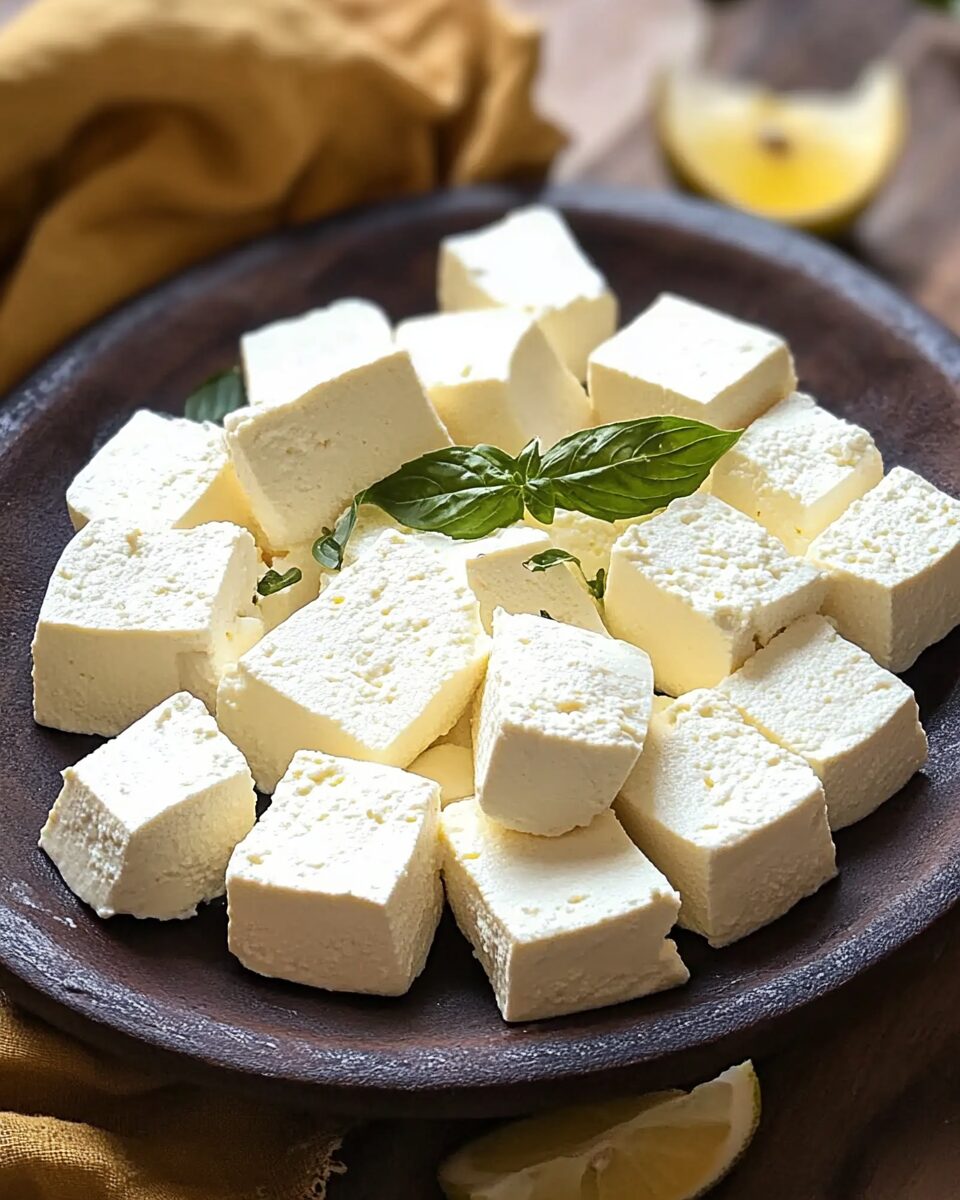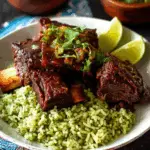Paneer is an essential ingredient in Indian cuisine, and making it fresh at home is a rewarding and straightforward process. With just two basic ingredients—milk and lemon juice or vinegar—you can create this soft, creamy cheese that’s perfect for a variety of dishes. Whether grilled, added to curries, or eaten on its own, paneer is a versatile and delicious protein option for vegetarians.
Making your own paneer ensures it’s fresh, with no additives or preservatives, and allows you to control its texture, from soft and crumbly to firm and sliceable. Once you’ve tried homemade paneer, you’ll never want to go back to store-bought again!
Full Recipe:
- 2 liters full-cream milk
- 2 tablespoons lemon juice or vinegar
- Muslin cloth or cheesecloth
Directions:
- Pour the milk into a large, heavy-bottomed pot and bring it to a gentle boil over medium heat, stirring occasionally to prevent burning.
- Once the milk reaches a rolling boil, reduce the heat to low and slowly add the lemon juice or vinegar, stirring gently. You will see the milk curdle and the whey separate.
- Turn off the heat and allow it to sit for about 10 minutes to ensure the curds fully form.
- Line a colander with a muslin or cheesecloth and pour the curdled milk through it, catching the curds and discarding the whey (or save it for other uses).
- Rinse the curds with cold water to remove any lingering sourness from the lemon juice or vinegar.
- Gather the edges of the cloth and twist it to squeeze out as much moisture as possible. Tie the cloth and place a heavy object (like a pan or a pot filled with water) on top to press the paneer for 30-40 minutes.
- Once firm, remove the paneer from the cloth and cut it into cubes or use it in your desired dish.
Prep Time: 10 minutes | Cooking Time: 15 minutes | Total Time: 50 minutes
Kcal: 265 kcal | Servings: 4 servings
Everything You Need to Know About Paneer: The Fresh Indian Cheese
Paneer, also known as Indian cottage cheese, is a fresh, non-melting cheese that has been a staple in Indian cuisine for centuries. Its simplicity, versatility, and rich flavor have made it one of the most beloved ingredients in vegetarian and non-vegetarian dishes alike. With a delicate texture and neutral taste, paneer is the perfect canvas to absorb the vibrant spices and flavors of Indian cuisine.
Making paneer at home is an easy process that yields soft, fresh cheese free from preservatives, making it a healthier alternative to store-bought versions. With just two main ingredients—milk and an acid like lemon juice or vinegar—this cheese can be prepared in less than an hour and used in a wide range of dishes. Let’s dive deeper into the world of paneer and discover why it’s such an integral part of Indian cooking.
The Origins and Cultural Significance of Paneer
Paneer has a long history that dates back centuries and is widely used across the Indian subcontinent. While the exact origins of paneer are not definitively known, some believe that its creation was influenced by Persian and Afghan traders who brought their knowledge of cheese-making techniques to India. Others suggest that paneer may have originated in Bengal or the northwestern regions of India, where dairy is a prominent part of the local diet.
In Indian households, paneer is more than just an ingredient—it represents a connection to tradition, home-cooked meals, and family gatherings. Many Indian households, especially in the northern regions, prefer to make paneer fresh at home, allowing them to control its texture and flavor. In some communities, the process of making paneer is passed down from one generation to the next, serving as a link to cultural heritage and family customs.
Why Paneer is a Versatile Ingredient
One of the reasons paneer is so popular in Indian cuisine is its remarkable versatility. Since it has a mild flavor and firm texture, it can be used in an array of dishes, from appetizers and snacks to hearty main courses. Its neutral taste allows it to absorb the spices, sauces, and marinades used in cooking, enhancing the overall flavor of the dish. Here are some popular ways to use paneer in Indian cooking:
- Curries: Paneer is often featured in curries such as Palak Paneer (paneer cooked in a spinach-based sauce) and Paneer Butter Masala (paneer simmered in a rich tomato and cream sauce). In these dishes, paneer absorbs the vibrant spices and sauces, creating a delicious balance of flavors.
- Grilled or Fried: Paneer can be grilled or fried to develop a crispy outer layer while keeping the inside soft. Dishes like Paneer Tikka (grilled paneer marinated in spices) and Paneer Pakoras (paneer fried in a chickpea flour batter) are popular as appetizers and street food.
- Stir-Fries and Sautés: Paneer can be added to stir-fried vegetable dishes for added protein and texture. Its firm structure means it holds up well in high-heat cooking methods, making it a perfect addition to quick sautéed dishes.
- Stuffed Breads: Paneer can be crumbled and used as a stuffing in Indian breads like Parathas (stuffed flatbreads) and Kulchas (soft leavened bread), adding a rich, creamy filling to the bread.
- Salads and Cold Dishes: Paneer can be cubed and added to salads or cold dishes, giving them a protein boost and adding a chewy texture. It’s a great option for incorporating dairy into vegetarian salads.
Nutritional Benefits of Paneer
Paneer is not only a delicious and versatile ingredient, but it is also packed with nutritional benefits that make it an excellent addition to a balanced diet. Below are some key health benefits of paneer:
- High in Protein: Paneer is an excellent source of protein, making it a popular choice for vegetarians and those looking to incorporate more plant-based protein into their diets. A 100g serving of paneer contains approximately 18g of protein, which helps in muscle repair and growth.
- Rich in Calcium: Since paneer is made from milk, it is rich in calcium, which is crucial for maintaining strong bones and teeth. Regular consumption of paneer can help prevent conditions like osteoporosis, especially in older adults.
- Low in Carbohydrates: Paneer is low in carbohydrates, making it a suitable option for people following low-carb diets or those managing diabetes. It provides sustained energy without causing spikes in blood sugar levels.
- Packed with Essential Vitamins and Minerals: Paneer contains several essential vitamins and minerals, including phosphorus, magnesium, and vitamin B12, which are important for maintaining overall health, supporting metabolic function, and boosting immunity.
- Helps in Weight Management: The high protein content in paneer promotes a feeling of fullness, which can aid in weight management. Paneer is also relatively low in calories, making it a suitable option for those looking to maintain a healthy weight without sacrificing flavor.
- Supports Heart Health: While paneer contains fats, it can be part of a heart-healthy diet when consumed in moderation. Opting for low-fat milk when making paneer can help reduce its overall fat content.
The Importance of Fresh Paneer
Although store-bought paneer is widely available in most supermarkets, there are distinct advantages to making your own paneer at home. When you make paneer yourself, you have full control over the ingredients, ensuring that there are no additives or preservatives. This is particularly beneficial for individuals with dietary restrictions or those who prefer clean, whole foods.
Homemade paneer also tends to have a fresher, creamier texture compared to store-bought varieties, which can sometimes be rubbery or overly firm. Additionally, making your own paneer allows you to customize its texture based on your preferences. For softer paneer, press it for a shorter amount of time, while for firmer paneer, apply more pressure and leave it to set for longer.
Paneer in Modern Cuisine
While paneer has been a staple in traditional Indian cooking for centuries, it has also made its way into modern and fusion cuisines around the world. With the rise in plant-based diets and the growing popularity of vegetarian and vegan meals, paneer is often featured in global recipes that draw on Indian flavors.
Chefs in Western countries have embraced paneer in creative ways, incorporating it into dishes such as paneer burgers, paneer wraps, and even paneer tacos. Its high protein content and satisfying texture make it a great alternative to meat, while its neutral flavor pairs well with various global spices and seasonings.
For those looking to experiment with new flavors, paneer offers endless possibilities in the kitchen. Whether you prefer traditional Indian recipes or want to try something new, paneer can be adapted to suit a wide range of tastes and cuisines.
Conclusion: Why Paneer Deserves a Place in Your Kitchen
Paneer is more than just a cheese—it’s a culinary star that shines in both traditional and modern dishes. Its versatility, ease of preparation, and rich nutritional profile make it a must-have ingredient for any home cook, especially those looking to add more plant-based protein to their diet.
Making paneer from scratch is a simple and rewarding process that allows you to enjoy fresh, preservative-free cheese with minimal effort. Whether you’re using it in a rich curry, grilling it for a snack, or adding it to salads, paneer is a delicious and wholesome addition to any meal.






